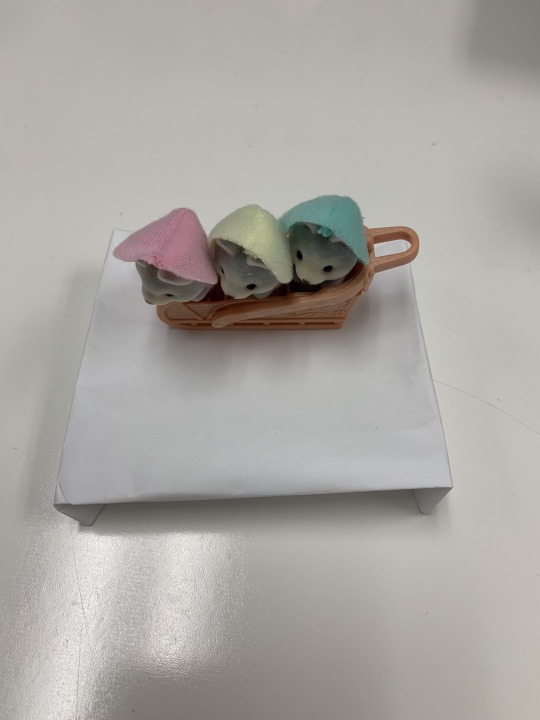#refuse reduce reuse recycle rot
Text
Easy zero waste tip no. 3: Know your R's
Refuse: If you don't acquire the thing that will become waste in the first place, it won't produce further waste. Simple enough. Refuse that which you do not need. Example: All that cute stuff on that Buzzfeed article? You don't need it. Don't even click the link.
Reduce: If you need something, get the minimum. Note that this doesn't mean the cheapest option- it means the most effective and environmentally friendly option. Example: Instead of buying disposable razors, or a razor with changeable heads, try out a safety razor. Instead of using plastic toothbrushes, try out bamboo, and instead of toothpaste in disposable tubes, try out some toothpaste bits. Instead of buying chicken breasts for one thing and chicken broth for another, get a whole chicken and learn to butcher its meat, and make broth from the skin and bones.
Reuse: This means both being mindful of purchases, so you're only buying things that are reusable whenever possible (Example: use beeswax wrap instead of saran wrap), and repurposing things you've already bought (Example: use those little Oui yogurt containers to start seeds for your garden).
Recycle: Find out what your local recycling program actually recycles, and be mindful. Aluminum is a safe bet most of the time, as is paper/cardboard; but plastics, most of the time, are a dud, so try to refuse, reduce, and reuse plastic whenever possible so you don't even need to worry about recycling it. This also refers to donation- that's another valid way to recycle things!
Rot: If you have a yard, start a compost pile! Just try to get a 50/50 balance of food scraps to brown matter (paper, dry leaves, etc). If you have a freezer, you can stick a container in there to act as a compost thing until you can bring it to a compost facility, such as a local garden, or farm. If you don't have the ability to do either of these things, then you can see if there's a subscription compost service in your area (I used CompostNow for ages, they're great).
Understanding these five principles, and looking at them in this order, can make things easier. Next time you're buying something, or about to throw something away, consider which of these might allow you to reduce your waste output in the future.
#zero waste#sustainability#anti consumerism#anti consumption#eco friendly#sustainable#environment#five r's#refuse reduce reuse recycle rot#reduce reuse recycle#recycle#ecofriendly#recycling#compost#composting
182 notes
·
View notes
Text

#recycling#good news#environmentalism#lidl#united kingdom#rethink refuse reduce reuse repurpose recycle rot
13 notes
·
View notes
Text
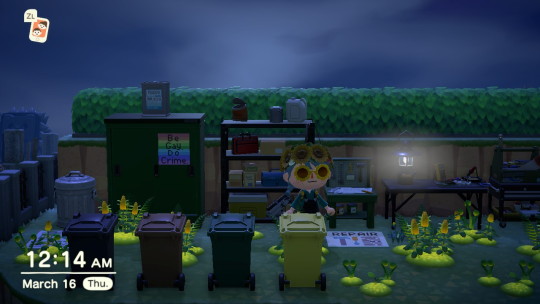
♻️ The Repair/Reuse/Recycle/Rot section on Praxis. ♻️
#animal crossing#animal crossing new horizons#acnh#acnh screenshots#animal crossing creations#acnh photos#acnh life#new horizons#animal crossing community#acnh praxis#reduce reuse recycle repair#reduce reuse recycle#refuse reduce reuse repair recycle rot#repair reuse recycle rot
5 notes
·
View notes
Text
Going Zero Waste: Practical Tips For A More Sustainable Tomorrow

View On WordPress
#benefits#challenges#composting#recycle#recycling#reduce#reuse#5 R&039;s of zero waste#conscious consumerism#refuse#rot#sustainable lifestyle
0 notes
Text





Today, we celebrate Make a Difference Day!
Check out our inspiring Ocean Guardian students engaging in hands-on environmental stewardship projects-
NOAA Ocean Guardian Schools strive to protect and conserve their local watersheds, national marine sanctuaries, and the ocean. Under the program, PreK–12 schools propose and implement a school- or community-based stewardship project, spanning five program pathways: Watershed Restoration, School Garden/Habitat, Energy and Ocean Health, Marine Debris, and 6Rs (Rethink/Reduce/Refuse/Reuse/Recycle/Rot).
Does your school want to make a difference and help protect the ocean and environment for future generations? The 2024–2025 Ocean Guardian School application will be available to download from our website by April 1, 2024. Stay tuned for more updates!
#Stewardship#Environment#Education NOAA Education#ForTeachers#ForStudents#earthisblue#noaa#ocean#nature#science#national marine sanctuary#conservation#make a difference#make a difference day
43 notes
·
View notes
Text

Recycling Vocabulary
पुनरावर्तन, पुनर्विनीकरण - recycling (masculine)
* पुनरावर्तन / पुनर्विनीकरण करना - to recycle (transitive), also पुनरावर्तित करना
* पुनरावर्तन की प्रक्रिया - recycling process (feminine)
पुनरावर्तनीय - recyclable (adjective)
पुनरावर्ततित - recycled (adjective)
पर्यावरणीय लाभ - environmental benefits (masculine)
कम करना, पुनः प्रयोग करना, पुनरावर्तन करना - reduce, reuse, recycle
अपशिष्ट को कम करना - to reduce waste (transitive)
ऊर्जा की खपत कम करना - to reduce energy consumption (transitive)
वायु-प्रदूषण को कम करना - to reduce air pollution (transitive)
पुनःप्रयोग - reuse (masculine)
पुनःप्रयोग करना, पुनः उपयोग में लाना, फिर से इस्तेमाल में लाना - to reuse (transitive)
पर्यावरणनीय सचेतन विकल्प - environmentally conscious choice (masculine)
उत्पाद - product (masculine)
उत्पन्न करना - to produce (transitive)
अपशिष्ट - waste (masculine)
* मिश्रित अपशिष्ट - mixed waste
* खत��नाक अपशिष्ट - hazardous waste
* हरे अपशिष्ट - green waste
* अपशिष्ट प्रबंधन - waste management (masculine)
कचरा, कूड़ा, कूड़े-कर्कट - garbage, waste, refuse, trash, rubbish (masculine)
* घरों के कूड़े-कर्कट - household waste, also घरेलू कूड़े-कचरा
निपटान - disposal (feminine)
* अपशिष्ट निपटान - waste disposal
* उचित निपटान - proper disposal
छांटन, छँटाई - sorting (feminine)
* छँटाई करना, छांट लेना - to sort (transitive)
* रंगों के अनुसार छांट करना - to sort by color
पुनर्चक्रण बिन - recycling bin (masculine)
कचरा पात्र, कूड़ेदान - waste bin (masculine)
कचरा उठाने वाला, कूड़ा-कर्कट बटोरने वाला - garbage man, garbage collector (masculine)
अपशिष्ट को एकत्रित कर ढ़ोने वाली गाड़ी - garbage truck (feminine), also ट्रक (masculine)
एकत्रित करना, संग्रह करना - to collect (transitive)
एकत्रीकरण, संग्रहण - collection, gathering (masculine)
उबारना, उद्धार करना - to salvage (transitive)
सामग्री - material (feminine), also पदार्थ (masculine)
* कटी-छंटी सामग्री - scrap material
संसाधित करना - to process (transitive)
पुनर्संसाधन - reprocessing (masculine)
कच्चा माल - raw material (masculine)
सड़ना - to rot (intransitive)
खाद - fertilizer (masculine)
सड़ाकर खाद बनाना - to make compost (transitive)
प्राकृतिक तरीके से सड़नशील अपशिष्ट - biodegradable waste (masculine)
जमीन की भराई - landfill (feminine)
Recyclable Materials
कांच - glass (masculine)
* कांच की बोतल - glass bottle
मर्तबान - jar (masculine)
कागज़ - paper (masculine)
गत्ता - cardboard (masculine)
धातु - metal (feminine)
* विषाक्त भारी धातु - toxic heavy metals
इस्पात - steel (masculine)
प्लास्टिक - plastic (masculine)
* प्लास्टिक का थैला - plastic bag (masculine)
वस्त्र - clothes, fabric (masculine)
बाग़-बगीचों का कचरा - garden waste (masculine)
पेय पात्र - drink container (masculine)
बैटरी - battery (feminine)
बिजली के उपकरण - electronics (masculine)
3 notes
·
View notes
Text
Nachhaltig Leben mit Zero Waste Lifestyle

Der Zero Waste Lifestyle ist ein nachhaltiger und umweltbewusster Lebensstil, bei dem das Ziel ist, so wenig Müll wie möglich zu produzieren. Durch die bewusste Vermeidung von Abfall und den Einsatz nachhaltiger Produkte trägst du dazu bei, die Umwelt zu schützen und Ressourcen zu schonen. Der Zero Waste Lifestyle umfasst verschiedene Prinzipien wie die Reduzierung von Plastik, das Wiederverwenden von Produkten und das Upcycling von Materialien. Durch bewusstes Konsumverhalten und die Anwendung der 5R-Regeln (Refuse, Reduce, Reuse, Recycle, Rot) kannst du deinen eigenen Beitrag zu einem nachhaltigeren Leben leisten.
Wichtige Erkenntnisse
- Der Zero Waste Lifestyle ist ein nachhaltiger und umweltbewusster Lebensstil.
- Ziel ist es, so wenig Müll wie möglich zu produzieren und Ressourcen zu schonen.
- Der Einsatz nachhaltiger Produkte und das Vermeiden von Plastik sind wichtige Aspekte.
- Die Anwendung der 5R-Regeln (Refuse, Reduce, Reuse, Recycle, Rot) ist entscheidend.
- Mit kleinen Schritten kannst du einen positiven Beitrag zur Müllvermeidung leisten.
Definition und Vorteile des Zero Waste Lifestyles
Der Zero Waste Lifestyle bedeutet wortwörtlich "Null Müll" und hat das Ziel, mit der eigenen Lebensweise so wenig Abfall wie möglich zu produzieren. Dieser Lebensstil hat viele Vorteile, darunter eine reduzierte Umweltbelastung, Ersparnis von Geld, Erhaltung der Gesundheit, Schutz der Umwelt, der Tiere und der lokalen Wirtschaft sowie Schonung von Ressourcen. Indem du bewusst auf Einwegprodukte verzichtest, Plastikmüll reduzierst und ressourcenschonende Alternativen wählst, kannst du diese Vorteile des Zero Waste Lifestyles genießen.
Dieser umweltbewusste Lebensstil bietet eine nachhaltige Lösung für die Abfallkrise und kann sowohl auf individueller als auch auf gesellschaftlicher Ebene positive Auswirkungen haben.
Regeln und Grundausstattung für den Zero Waste Lifestyle
Um den Zero Waste Lifestyle erfolgreich umzusetzen, gibt es einige Regeln und eine Grundausstattung, die hilfreich sind. Die 5R-Regeln (Refuse, Reduce, Reuse, Recycle, Rot) bilden die Grundlage, indem sie dazu ermutigen, Abfall zu vermeiden, den Konsum zu reduzieren, Produkte wiederzuverwenden, zu recyceln und zu kompostieren.
Um diese Regeln in die Praxis umzusetzen, ist eine gute Grundausstattung unerlässlich. Dazu gehören wiederverwendbare Taschen, Behälter, Stoffservietten, Trinkflaschen, Tupperware und andere nachhaltige Alternativen. Durch die Anwendung dieser Regeln und die Nutzung der richtigen Produkte kannst du den Zero Waste Lifestyle erfolgreich umsetzen.
Für unterwegs sind wiederverwendbare Taschen und Behälter besonders wichtig, um auf Einwegverpackungen zu verzichten. Stelle sicher, dass du immer eine wiederverwendbare Trinkflasche und eine Brotdose dabei hast, um Take-Away-Verpackungen zu vermeiden.
Der Einsatz von Stoffservietten anstelle von Papierservietten ist nicht nur nachhaltiger, sondern verleiht auch deinen Mahlzeiten einen eleganten Touch.
Um Plastikmüll im Badezimmer zu reduzieren, kannst du auf Shampoo- und Seifenbars umsteigen, die ohne Einwegverpackungen auskommen. Auch Menstruationsprodukte wie wiederverwendbare Stoffbinden oder Menstruationstassen sind eine nachhaltige Alternative zu Einwegprodukten.
Mit der richtigen Grundausstattung und der Umsetzung der 5R-Regeln kannst du deinen eigenen Beitrag zum Zero Waste Lifestyle leisten und aktiv zur Müllvermeidung beitragen. Starte noch heute und mach einen Unterschied!
Tipps zur praktischen Umsetzung des Zero Waste Lifestyles im Alltag
Der Zero Waste Lifestyle bietet eine nachhaltige Möglichkeit, unseren ökologischen Fußabdruck zu reduzieren und aktiv zur Müllvermeidung beizutragen. Um diesen Lebensstil im Alltag praktisch umzusetzen, gibt es einige Tipps, die dir helfen können.
Einkauf von unverpackten Lebensmitteln
Eine der einfachsten Möglichkeiten, den Zero Waste Lifestyle im Alltag umzusetzen, ist der Kauf von unverpackten Lebensmitteln. Suche nach Märkten, Geschäften oder Bauernmärkten, die unverpackte oder lose Produkte anbieten. Bringe wiederverwendbare Obst- und Gemüsebeutel mit, um frische Produkte ohne Verpackung einzukaufen.
Vermeiden von Einwegprodukten
Ein weiterer wichtiger Tipp ist das Vermeiden von Einwegprodukten. Benutze wiederverwendbare Alternativen wie Trinkflaschen, Kaffeebecher, Brotdosen und Stoffservietten. Durch die Nutzung dieser Produkte kannst du Abfall vermeiden und Ressourcen schonen.
Einsatz von wiederverwendbaren Behältern und Taschen
Um Einwegverpackungen zu reduzieren, solltest du auch wiederverwendbare Behälter und Taschen verwenden. Nimm zum Beispiel eine wiederverwendbare Lunchbox mit, um Essen für unterwegs mitzunehmen, oder verwende Stofftaschen für den Einkauf. Wenn du Essensreste hast, bewahre sie in Glasbehältern auf, anstatt Plastikfolie oder Alufolie zu verwenden.
Kompostieren
#gesundheit #fitness #lifestyle #beziehungen #achtsamkeit
Original Content von:
https://www.gutundgesund.org/
Lesen Sie den ganzen Artikel
0 notes
Text
Embrace Simplicity, Reduce Waste: Zero-Waste Living Tips for a More Sustainable Home

The world cries out for change, and our homes can be the starting point. By embracing a zero-waste lifestyle, we minimize our environmental footprint and contribute to a healthier planet. It may seem daunting, but transitioning to zero-waste living is more about mindful choices and small steps than drastic upheavals. Let's delve into some practical tips to help you create a more sustainable home
Photo by Karolina Grabowska on Pexels.com
Photo by Karolina Grabowska on Pexels.com
Refuse: Say "no" to unnecessary waste!
- Decline single-use items: Ditch plastic bags, straws, and disposable cutlery. Carry reusable alternatives like cloth bags, metal straws, and bamboo utensils.
- Embrace digital communication: Opt for paperless bills, e-books, and online newsletters instead of physical copies.
- Refuse unnecessary packaging: Avoid products with excessive packaging. Choose loose fruits and vegetables, refill containers, and buy in bulk where possible.
Reduce: Consume less, buy consciously, and extend lifespans.
- Plan your meals: Create grocery lists based on planned meals to avoid impulse buys and food waste.
- Invest in quality items: Buy durable, repairable products that last longer, reducing the need for frequent replacements.
- Borrow, rent, or share: Consider borrowing tools, renting equipment for occasional use, or joining sharing platforms for resources you don't need frequently.
- Embrace minimalism: Declutter your home regularly. Donate or sell unused items, and resist the urge to accumulate unnecessary possessions.
Reuse: Give new life to old items, promoting creativity and resourcefulness.
- Repurpose containers: Use jars, bottles, and tins for storage, DIY projects, or planters. Get creative and unleash your imagination!
- Mend and repair: Instead of discarding slightly damaged items, try repairing them yourself or seek professional help.
- Upcycle old clothes: Breathe new life into worn-out garments by altering them, turning them into cleaning cloths, or donating them for further transformation.
- Organize swap parties: Gather friends and neighbors to exchange unwanted items you no longer need, giving them a second life in new homes.
Recycle: When inevitable, recycle responsibly to minimize landfill waste.
- Learn your local recycling rules: Understand what materials your community accepts and ensure proper sorting for efficient recycling.
- Compost food scraps and yard waste: This reduces waste sent to landfills and creates nutrient-rich compost for your garden.
- Explore creative recycling options: Some items, like electronics or certain plastics, may require specialized recycling programs. Research options in your area to ensure proper disposal.
Rot: Composting food scraps and yard waste transforms waste into valuable resources.
- Start a compost bin: Choose a bin suitable for your space and follow composting guidelines for optimal results.
- Turn food scraps into nutrient-rich soil: This nourishes your garden and reduces organic waste sent to landfills.
- Explore community composting options: If individual composting isn't feasible, some communities offer shared composting programs.
https://cozypronest.com/passport-to-imagination-modern-world-travel-kids-room-design/
Zero-waste living is a journey, not a destination. Start small, celebrate your progress, and don't get discouraged by occasional setbacks. By incorporating these tips into your daily life, you can make a significant impact on your home's sustainability and contribute to a healthier planet. Let's strive towards a future where waste becomes a mere footnote, and our homes become beacons of responsible living.tunesharemore_vert
Read the full article
0 notes
Text
Looking for Plastic Pallets for Sale in UK: Beercraft is a Best Choice to Complete Your Need

Plastic Pallets are sturdy surfaces that are used for both storing and moving items. High-density polyethylene (HDPE) or polypropylene (PP), which is renowned for their strength, resilience to chemicals, and low weight, are commonly used to make them. Plastic pallets provide a more dependable and hygienic alternative to timber pallets, which are more prone to decay, splintering, and insect infestation. With their many benefits over conventional wooden pallets, including longevity, hygienic properties, and sustainability, they are a well-liked substitute.
Thus, if you're trying to find the Best Place to get Plastic Pallets for Sale UK, go with Beercraft, a trustworthy internet retailer. They are widely used in a variety of sectors for the storage and transportation of items, such as consumer goods, food, drinks, chemicals, and medicines. Plastic pallets are favored for international shipment because of their reduced weight and hygienic nature, which lowers transportation costs and complies with phytosanitary laws.
Plastic pallets' resistance to contamination and capacity to remain clean are advantageous in the sterile and regulated environment needed for pharmaceutical manufacture. In terms of sustainability, hygienic practices, and durability, they provide a plethora of benefits for a wide range of sectors. Plastic pallets are a flexible and affordable material handling and logistics solution that are essential to maximizing product integrity and supply chain effectiveness in a variety of sectors.
What are the Major Advantages to Use and Buy Plastic Pallets?
Durability
Due to its resistance to rot, moisture, chemicals, and insects, plastic pallets are more resilient than hardwood pallets. They last longer and are resistant to splintering, cracking, and warping even after frequent usage and hard handling. This is the reason that you will look for a best deal to get Plastic Pallets for Sale.
Hygiene
Plastic pallets are easily cleaned and sterilized, which makes them perfect for sectors like food, medicine, and healthcare that have stringent hygiene regulations. They contribute to keeping a hygienic and secure work environment since they are resistant to the growth of germs, mold, and fungi.
Consistency
Plastic pallets are known for their uniform dimensions, weight-bearing capabilities, and performance attributes. In contrast to hardwood pallets that may differ in dimensions, weight, and quality, plastic pallets offer consistency and are compatible with automated handling systems and storage apparatuses.
Customization
The size, shape, and load capacity of plastic pallets can be altered to satisfy particular needs. Additionally, features like non-slip surfaces, reinforced corners, and RFID chips for monitoring and identification can be included into their design.
Environmental Sustainability
By using recycled materials and being recyclable, a large number of plastic pallets help to preserve the environment and lessen the need for virgin plastic. Plastic pallets may be reused several times and have a longer lifespan than wooden pallets, which further lessens their environmental effect.
Safety
To reduce the possibility of worker injury and product damage, plastic pallets are made with smooth, rounded edges and corners. In addition, they are less heavy than wooden pallets, which lower the possibility of strain and damage during handling and transit.
Savings
Although plastic pallets may initially cost more than wooden pallets, over time, they can save money because of their resilience, lifespan, and reusability. Over time, plastic pallets can save costs by requiring less upkeep, posing a lesser risk of product damage, and being reusable.
The Bottom Line
Because plastic pallets abide by international phytosanitary requirements, there is less chance that they will be refused or delayed at customs checks and they may be shipped internationally. Additionally, they are not subject to ISPM 15 standards, which mandate that wooden pallets be fumigated or heat-treated in order to stop the spread of illnesses and pests. Durability, cleanliness, uniformity, personalization, environmental sustainability, safety, cost effectiveness, and compliance with international norms are all significant benefits of utilizing and Plastic Pallets for Sale UK. Plastic pallets are a flexible and dependable material handling and logistics solution that has many uses for companies in a range of sectors.
0 notes
Text
5 Mindset Shifts For Zero Waste Living
Sustainable living may seem difficult at first. Your 20 years of experience have kept you from making mistakes. The garbage can have been seen around town. Before giving up on your low-waste journey, it's nearly impossible to accomplish. The 5 steps to zero waste will assist you in doing so. This article will outline the five mindful shifts necessary to achieve zero waste.

What are the 5 R's of zero-waste living, and how do they help people consciously shift towards living without waste?
You've probably heard of the 3R’s of sustainability: reduce, reuse, and recycle. This article presents the 5 R's of Zero Waste living, which may represent a more comprehensive strategy for achieving a zero-waste lifestyle.
Refuse
Avoid single-use plastics like straws, coffee cups, Tupperware, and bags. Instead, buy bamboo straws, Keep Cup coffee cups, and Credo produce reusable bags.
It's hard to refuse, especially when convenience matters. Buying a coffee in a reusable cup is easier than remembering to bring it every time you leave the house. This is the hardest of the 5 R's of zero waste because it requires a mindset and consumption shift. You'll have to decide what kind of planet to live on.
Rent tools, catering equipment, baby car seats, camping gear, sports equipment (like skis), and furniture.
Reduce
Overconsumption contributes to global waste, so limit your material goods purchases. Look into dress rentals. Before buying anything, ask yourself if you need it and eliminate clutter and unused items.
Declaring can seem impossible at times. People procrastinate because they think they must first clean a room—or the garage. Decluttering your life should be done gradually. Start with a kitchen or bathroom drawer, then the medicine cabinet, fridge top, Tupperware drawer, etc. Decluttering your home takes time. It won't happen over a weekend or week.
Reuse
Reusing, repurposing, and upcycling items can extend their useful life. Buy used or thrift, and try upcycling to give old things a new lease on life.
Recycle
Find out where you can recycle your electronics and other household items, and do so regularly. There may be a need for games and cooking supplies at the local daycare centres. Books, toys, clothes, furniture, and magazines are always needed at refugee centres, women's shelters, nursing homes, and animal humane societies.
It's also good to visit nearby places like libraries, gardens, and recreation centres. It's more effort, but at least it helps you avoid throwing away unnecessary items. Fixing things is another option to consider.
It's important to check with the local government before throwing away large items like mattresses, refrigerators, pillows, old paint, etc., as they may offer disposal incentives or programmes.
Rot
Reduce, reuse, and recycle your garbage. Learn more than a hundred effective waste-cutting strategies to live waste free life. Don't just throw things away without consulting this handy chart first.
Conclusion
The goal of the 5'r's zero waste policy is, after all, environmental protection. Keep potentially harmful household products out of landfills by employing the 5 Rs of Zero Waste. Your mindset will change no matter how long it takes to adopt a more sustainable lifestyle. Awareness, personal responsibility, and new habits can lead to a waste-free life.
0 notes
Text
Week 3.5 Package Design - RRRRR





In order: refuse, reduce, reuse, recycle and rot. In class, we did an activity where we had to very quickly come up with something for each word. My favourite coming out of it was 3. I like the idea of it possibly being reversible.
=========================================

I sketched out a basic sketch on Procreate trying to figure out how it might look.
=========================================
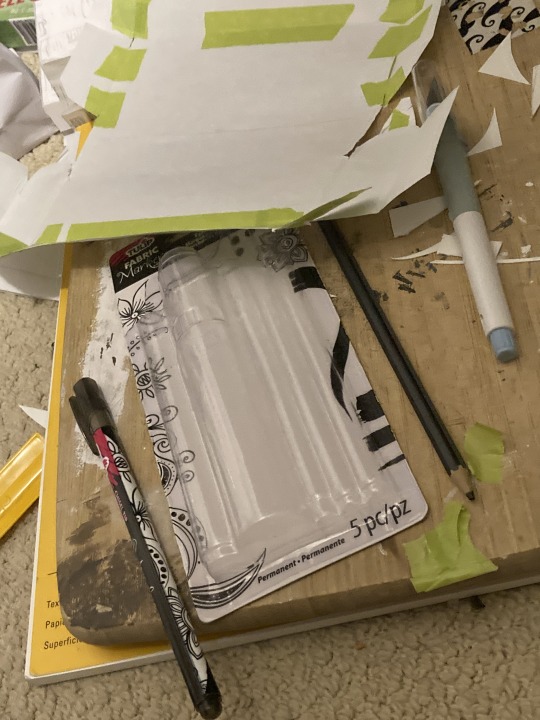
I whipped out the paper and wanted to make a mock-up to see if it would even work. My work station got a bit messy, to say the least.
=========================================



I love this kind of stuff and was so happy that it actually held together and didn't immediately explode. The reversible element will be tricky but I'm up for the challenge.
I do these kinds of crafts in my free time! - (っ^▿^)っ✏️
0 notes
Text


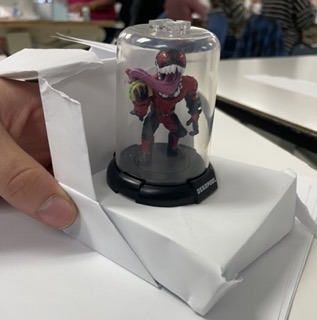

Project 1 Rationale
The 5 R's: Refuse, Reduce, Reuse, Recycle, Rot
During class we experimented with rough paper product models under the basis of the 5 R's you see above. It really opened my mind to the different possibilities of packaging and just how much I can reduce waste and excess, beyond the boundaries of what I had priorly imagined.
Planning Phase
Challenge: The main objective for this project was to find a product that is excessively over packaged and redesign it to be more practical and environmentally friendly with less materials. For my product I chose a Deadpool themed “Domez” collectible miniature, (see photo in post below) which comes in a small cardboard box with a large plastic viewing window.
The initial problems that I have identified are as follows: reducing the amount of plastic in and around the box, retaining viewability of the actual product, leaving appropriate room for the product branding and euro hangar, and making sure the collectible itself is protected. As it is a Deadpool themed collectible I need to find a way to make it feel very action themed and extravagant whilst also being very minimalistic which I feel could prove a challenge.
Approach: My first step in this project has been sketching up roughs and developing a few prototypes. My plan is to hopefully change the box to more of a triangular shape, and leave a cutout on one side in order to display the product. The main goal in my redesign is to eliminate as much plastic as possible, whilst still keeping the product safe and viewable. I’m trying to work out a way to keep the dome secure in the box, as currently the manufacturer has done it with a plastic cutout and a lot of tape. Right now the easiest solution for this seems to be making a cardboard mini stand for the base of the product in order to anchor it into the box.
Outcome: Hopefully my redesign should turn out quite well, I’m anticipating a little trouble with the dimensions of an angular box, but once I can plot a sure fire way to make everything secure and protected I think it should be a really solid piece of packaging!
1 note
·
View note
Text
Project #1 Eco-Friendly Packaging: Planning Phase

We experimented with messy 3D models during the 5R's activity, which really opened my mind to more possibilities. Trying to tackle sustainability can feel overwhelming all at once, so I appreciated that we created these models in bite-sized pieces instead of just trying to consider all 5 R's ( Refuse, Reduce, Reuse, Recycle, Rot). Above are the four most successful models which I will use as my jumping-off point for additional sketches and polished models.
Project Rationale Draft #1
Challenge
I am re-designing the packaging of a B•Color glitter eyeshadow. Its current space is wasteful of space, materials, and surface area. I think the biggest challenge I will face is effectively downsizing the product while fitting all of the information on it. The second challenge I may come across is the fact that the product I chose is not necessarily a popular brand, so I may struggle to come up with consistent branding. I can thankfully recreate the logo in Illustrator with relative ease.
Approach
My aim is to reduce the amount of packaging used so I can reduce the amount of space the product takes up in the shipping process, store shelves, and in the recycling bin. I will do away entirely with the plastic casing and switch to a cardboard material that is more easily recycled.
Outcome
I anticipate that the downsizing the packaging of the product will be successful. It will reduce the use of non-recyclable materials and will also minimize the carbon footprint that the product produces (Production, transportation, disposal). I hope that I will be able to merge design aesthetics and sustainability.
1 note
·
View note
Photo
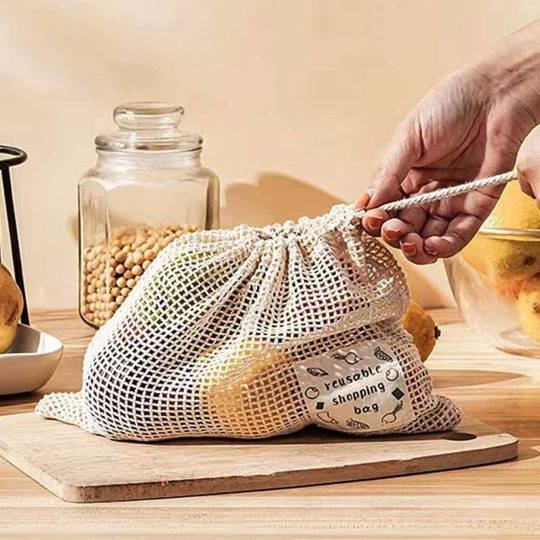

How To Reduce Your Waste Refuse what you do not need; reduce what you do need; reuse what you consume; recycle what you cannot refuse, reduce, or reuse; and rot (compost) the rest.
0 notes
Text
How essential is it to reduce carbon footprint?
As one of the leading Carbon footprint consultant, according to the Energy Information Administration, the molecules that trap heat in the earth's atmosphere are known as greenhouse gases. Although these gases do exist naturally, human activity has made a significant contribution to the emissions of greenhouse gases. We must recognize that the increase in carbon dioxide levels brought on by human activity and energy use beginning with the industrial revolution is now the main factor contributing to global warming and its effects. A few typical activities that cause the release of hazardous gases include using and wasting energy, operating vehicles, and industrial work.

Being a Carbon footprint consultancy, we must now recognize the significance of lowering carbon footprints and harmful emissions and begin acting to protect our world from global warming. Burning fuel is risky in many ways because it produces other atmospheric pollutants that are seriously detrimental to human health in addition to carbon dioxide. According to recent research, reducing greenhouse gas emissions could help stop up to 3.1 million premature deaths annually. According to other figures, an aggressive reduction in these harmful can help avoid 300,000 to 700,000 premature deaths annually.
In our understanding as Carbon footprint consultant, almost every area of the global economy—hardware production, agriculture, transportation, power generation, industries, etc.—is a significant source of greenhouse gas emissions into the atmosphere. To save the environment, we must immediately take the necessary steps to reduce this, prevent the worst impacts of climate change, and move away from fossil fuels. We are all observing the effects of climate change, and we all know that it is not permanent. We can take several actions to protect the earth from a constantly changing climate. Here are some quick and easy steps you can take to lessen your ecological footprint:
We believe as a Carbon footprint consultancy, refuse or Rot anything that cannot be reused, recycled, or recycled. Choose recyclable materials instead of single-use ones. Reduce the number of items you buy and only acquire what you truly need. Instead of tossing anything away, learn to reuse and recycle what you can. Simply put, commit to waste.
To help you as Carbon footprint consultant in Dubai, less driving and more biking and strolling are recommended because cars produce the most dangerous air pollutants and are significant sources of greenhouse gas emissions. According to a study, cars are responsible for 30% of all air pollution in the US, and these toxins are highly harmful to human health. Choose to bike because you'll be exercising for yourself, helping the environment, and lowering your carbon footprint, contributing to a better future.
0 notes
